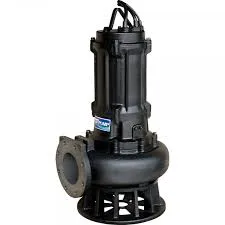Khmer
- Afrikaans
- Albanian
- Amharic
- Arabic
- Armenian
- Azerbaijani
- Basque
- Belarusian
- Bengali
- Bosnian
- Bulgarian
- Catalan
- Cebuano
- Corsican
- Croatian
- Czech
- Danish
- Dutch
- English
- Esperanto
- Estonian
- Finnish
- French
- Frisian
- Galician
- Georgian
- German
- Greek
- Gujarati
- Haitian Creole
- hausa
- hawaiian
- Hebrew
- Hindi
- Miao
- Hungarian
- Icelandic
- igbo
- Indonesian
- irish
- Italian
- Japanese
- Javanese
- Kannada
- kazakh
- Khmer
- Rwandese
- Korean
- Kurdish
- Kyrgyz
- Lao
- Latin
- Latvian
- Lithuanian
- Luxembourgish
- Macedonian
- Malgashi
- Malay
- Malayalam
- Maltese
- Maori
- Marathi
- Mongolian
- Myanmar
- Nepali
- Norwegian
- Norwegian
- Occitan
- Pashto
- Persian
- Polish
- Portuguese
- Punjabi
- Romanian
- Russian
- Samoan
- Scottish Gaelic
- Serbian
- Sesotho
- Shona
- Sindhi
- Sinhala
- Slovak
- Slovenian
- Somali
- Spanish
- Sundanese
- Swahili
- Swedish
- Tagalog
- Tajik
- Tamil
- Tatar
- Telugu
- Thai
- Turkish
- Turkmen
- Ukrainian
- Urdu
- Uighur
- Uzbek
- Vietnamese
- Welsh
- Bantu
- Yiddish
- Yoruba
- Zulu
Telephone: +86 13120555503
Email: frank@cypump.com
ធ្នូ . 11, 2024 01:44 Back to list
Slurry Pump Cover Plate Specifications and Best Practices for Optimal Performance
Understanding the Importance of Slurry Pump Cover Plates
Slurry pumps are essential components in various industries, including mining, construction, and wastewater treatment. They are specifically designed to handle mixtures of liquid and solid materials, known as slurry. One crucial part of these pumps is the cover plate, which plays a significant role in their overall functionality and efficiency. In this article, we will explore the importance of slurry pump cover plates and their impact on pump performance.
What is a Slurry Pump Cover Plate?
A slurry pump cover plate is a crucial component that seals the pump casing and provides access to the internal mechanisms. It is designed to withstand harsh operating conditions, including abrasion, corrosion, and high pressure. The cover plate not only protects the internal components of the pump but also ensures that the slurry is effectively contained within the pump system.
Key Functions of the Cover Plate
1. Protection Against Wear and Tear Slurry contains solid particles that can be highly abrasive. The cover plate is typically made from materials that can resist wear, such as high-chrome alloys or rubber linings. This protective feature prolongs the lifespan of the cover plate and the pump itself.
2. Maintaining Pump Efficiency A well-fitted cover plate prevents slurry leakage, which can substantially affect the pump's efficiency. Leaks can lead to loss of pressure and flow rates, forcing the pump to work harder and consume more energy. A properly sealed cover plate maximizes the hydraulic performance of the pump.
3. Ease of Maintenance Slurry pumps require regular maintenance to ensure optimal performance. The design of the cover plate allows for easy access to the pump’s internal components for inspection, cleaning, and replacement. Maintenance is crucial, especially in high-wear applications, to minimize downtime and keep operational costs in check.
slurry pump cover plate

4. Safety Given the substances that slurry pumps handle, safety is a paramount concern. The cover plate is designed to prevent slurry hazards by containing the material within the pump assembly. This feature helps to protect operators and maintenance personnel from exposure to hazardous materials.
Materials and Design Considerations
When choosing a cover plate for slurry pumps, several factors must be considered
- Material Selection The choice of material for the cover plate is critical. Depending on the specific application and the nature of the slurry being pumped, materials such as steel, cast iron, rubber, or polyurethane may be used. Each material has its own benefits and drawbacks regarding wear resistance, corrosiveness, and cost.
- Design Compatibility The cover plate must be compatible with the specific pump model to ensure proper fitting and sealing. Manufacturers usually provide specifications and guidelines to help choose the right cover plate for a slurry pump.
- Custom Solutions In some cases, custom-designed cover plates may be necessary to meet unique operational demands. Customized solutions can address specific wear characteristics or chemical exposures, ensuring longevity and performance.
Conclusion
Slurry pump cover plates are integral to the efficient operation of slurry pumps. Their ability to protect, maintain efficiency, facilitate maintenance, and ensure safety underlines their importance in various industrial applications. When selecting a cover plate, it’s essential to consider material, design compatibility, and specific operational requirements. Investing in high-quality cover plates will not only enhance pump performance but also save costs in the long run by reducing maintenance needs and extending the life of the pump system. As industries continue to rely on slurry pumps for their operational needs, understanding and prioritizing cover plate selection will undoubtedly yield significant benefits.
-
Reliable Non-Clog Sewage Pumps with GPT-4-Turbo Tech
NewsAug.04,2025
-
High-Performance Air Pumps for Sand & Gravel | Efficient Transport
NewsAug.03,2025
-
ISG Series Vertical Pipeline Pump - Chi Yuan Pumps Co., LTD.|Energy Efficiency, Corrosion Resistance
NewsAug.03,2025
-
ISG Series Pipeline Pump - Chi Yuan Pumps | Energy Efficiency&Compact Design
NewsAug.03,2025
-
ISG Series Vertical Pipeline Pump - Chi Yuan Pumps Co., LTD.|High Efficiency, Low Noise, Durable
NewsAug.02,2025
-
ISG Series Vertical Pipeline Pump - Chi Yuan Pumps | High Efficiency, Low Noise
NewsAug.02,2025










